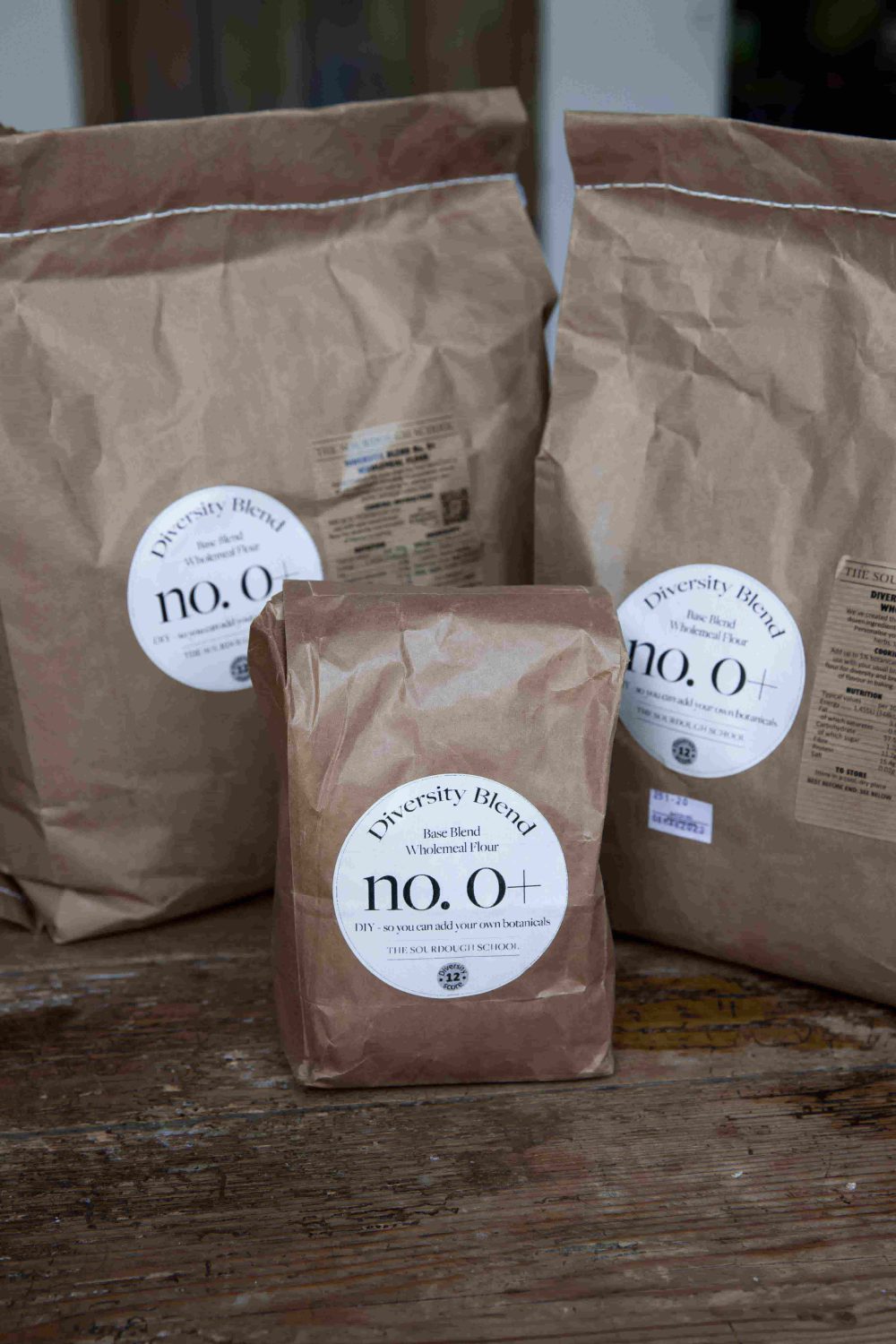I was asked recently if we have succeeded in the mission to bringing the knowledge of sourdough and bread that nourishes to the masses. In so many ways yes we succeeded, as sourdough became the lockdown ultra hobby. Yet in so many ways I have failed to make changes in the spaces where it matters most.
Part of the logic behind training healthcare professionals in the very first place was a way to tackle the frustration of watching healthcare professionals advise badly on bread because so many healthcare professionals get it wrong so much of the time. Well known influences perpetuate the misinformation that is used when advising patients to avoid bread or gluten is really based on an understanding of bread as an ultra-processed food. But they do not take into consideration that not all breads are ultra-processed.
It’s a simple answer, Gluten is bad. In this video, Dr Mark Hyman lumps in two completely different diagnoses, dramatically suggesting the gluten can kill you. It is very typical of the hysteria of many healthcare professionals, and in omitting the process from all discussions, it is totally wrong and far too simplistic a statement. Still, it comes from the acceptance of bread being the mass-produced ones we see on every supermarket shelf. Yet the supermarket shelf does not auto define if a bread is ultra-processed. Likewise, not all artisan loaves are nourishing. In an ideal world, we’d all be eating 100 per cent organic wholegrain, slow-fermented sourdough bread. Don’t be fooled by the word ‘artisan’; even artisan breads can be an ultra-processed food.
So how do we better understand bread?
There is a very useful food classification called the NOVA food-classification system that sets out four distinct categories of food, and this can let people know what kind of bread they’re eating. To see all bread lumped in under group 4 – ultra-processed food – is clearly wrong.=
It is confusing, and much of the advice I see from functional medics, especially on social media, is to avoid gluten and bread at all costs. In fact, if they were to say instead to avoid ultra-processed foods (category 4 foods) perhaps it would be clearer to their patients what kind of bread they can eat, rather than simply dropping amazing, healthy bread and unrefined carbohydrates from their diets that has so many associated health benefits.
What is an ultra-processed bread, and where does the definition come from?
Part of the confusions is that ultra-processed bread doesn’t necessarily mean that it’s mass-produced. Nor does it mean that all artisan breads are not ultra-processed. For example, I would consider an artisan loaf produced with 100 per cent refined white, roller-milled flour, to be a group 4 bread, despite being sourdough. What this loaf does do is avoid some of the unpleasant preservatives, emulsifiers and chemical cocktails that are often listed as ingredients in mass-produced breads. Nonetheless, it would still be devoid of nutrients and fibre. None of the good things are inside – no phytochemicals, fibre, B-vitamins or wheatgerm – because they have been stripped out. Breads of this type are also energy-dense, so they will spike your blood sugar, which in turn is associated with inflammation. You can also expect refined white bread to be hyper-palatable, especially when you add butter, cheese or fats. These combinations (for example in sandwiches) are addictive, making you want to eat more. Often, we see fast-food chains specifically developing that hyper-palatability to increase their sales, knowing we have no ‘off’ switch when it comes to eating them.
There is sometimes more information about bread on the labels.
Often on the labels of these ultra-processed foods in supermarkets (like long-life baked goods and sandwiches), you will find listed ingredients that are a good indicator of bread being ultra processed, such as emulsifiers like CMC (carboxymethyl cellulose), which have been linked to damage in the gut. There have been several papers out recently to show how this happens.
What is not on the label is the pesticides and herbicides such as Glysophate, which is often sprayed on wheat. The World Health Organization in 2015 announced this herbicide as a probable carcinogenic to humans. The European Food Safety Authority (EFSA) is expected to finalise its conclusions on all possible risks that exposure to glyphosate might pose by July 2023.
Another additive, Calcium propionate, is a preservatives that you can often find listed on the packaging of ultra-processed bread (alongside with the other E-numbers or emulsifiers) and studies show that it has been shown to increase the production of insulin. There is so much research covering heart disease, obesity and cancer that links ultra-processed foods to early death. One 2020 narrative review Vanessa to insert link to study] of ultra-processed foods and their health outcomes showed plausible mechanisms and evidence supporting the fact that ultra-processed foods are associated with type 2 diabetes, obesity, cancer, cardiovascular disease and depression. Researchers haven’t been able to prove the causal relationship, but they have been able to develop very plausible ways to directly link mass-produced foods (including refined bread) with negative health impacts.
A 2002 perspective cohort study Vanessa to insert link to study], showed this type of food was associated with significantly increased risk of type 2 diabetes. An epidemiological have shown that the consumption of ultra-processed foods was associated with high risk for all causes of mortality, heart disease, IBS, metabolic diseases and other adverse health outcomes. It’s fair to conclude that ultra-processed breads in NOVA category 4 are linked to early death.
In differentiating between foods in NOVA groups 3 and 4 (processed foods and ultra-processed foods), the defining line isn’t necessary the process. At this point, I think we must look at the ingredients or the percentage of unrefined flour in the loaf to make that differential – and to my knowledge, that percentage hasn’t yet been defined. From a personal point of view, I tend to define that percentage as being 40–50 per cent wholegrain. There’s this strange grey area in the middle, but in an ideal world, all bread would be, at minimum, 50 per cent wholegrain. An absolutely perfect example of a non-refined bread would be a 100 per cent wholegrain boule made with a Botanical Blend diversity flour, if possible. But we don’t live in a perfect world, and there’s always a compromise between crumb structure and palatability.
There’s a theory of an ideal loaf – and then there is the question of whether or not you can digest this loaf.
We teach our students how to know if sourdough is good for you and techniques to support changes in the way people approach bread. Why because simple switching to 100 per cent wholegrain in the very first instance isn’t a very successful route to take. If you are introducing wholegrain to people who are used to eating refined bread, you first need to retrain their microbes.
This process can take up to twelve to fourteen weeks and is important to get people comfortably digesting their bread. It’s an incremental addition of wholegrain that you want to achieve, adding a bit at a time, slowly increasing the percentage of wholegrain until you find that sweet spot – where you have retrained their palates and understanding of what bread is. You need to rebuild the microbial populations that break down the cellulose, hemicellulose. They all need to be retrained – you wouldn’t expect an athlete to run a marathon on their very first day of training.





Leave a Reply